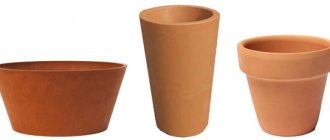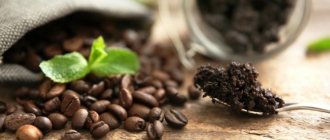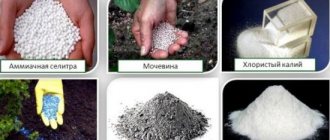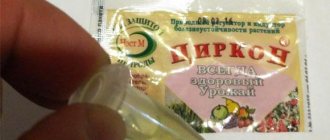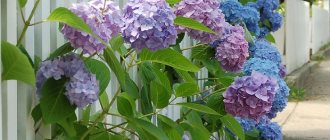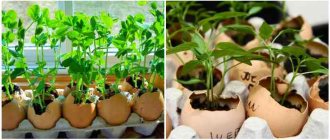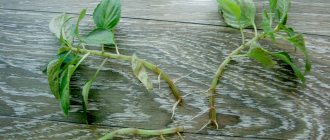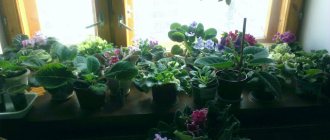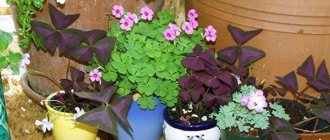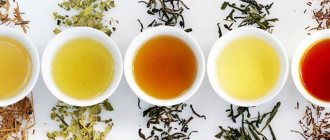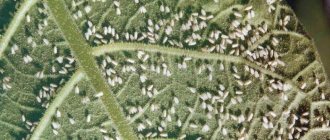Onion peel is one of the simple and safe ways to care for seedlings. You just need to cook it correctly. Our article will tell you how to do this, as well as what are the nuances of use.
Onion peels for feeding plants are one of the best ways to help them develop faster and be strong and healthy. In addition, the husk helps get rid of insects and fungal diseases. Vegetables grown using this fertilizer are absolutely safe to eat.
For which plants is onion peel suitable as fertilizer?
Fertilizing with onion peels is suitable for almost all plants. It is especially useful for peppers, potatoes, cucumbers and tomatoes. After its use, they begin to develop better, bloom and bear fruit profusely. In the article about choosing fertilizer for potatoes, we have already touched on fertilizing with onion peels.
In addition to garden crops, it is used to care for house plants. It helps indoor plants survive in difficult living conditions.
Beneficial features
There are several beneficial properties of onion peel. And it’s difficult to single out the main one.
- One of them is the fight against fungal diseases, various pathogenic bacteria and rot. Onion peel prevents them from spreading and developing. Reduces fungal growth. Has a disinfecting effect.
- The second is to improve the condition of the plant’s root system and, in connection with this, its strengthening and development. It prevents rotting. Prevents the early process of chlorophyll decay and participates in photosynthesis.
- Third, maintaining the plant’s immunity. Stimulates the plant's defenses, thus increasing the plant's resistance to adverse environmental factors. Participates in redox processes. Helps in the conversion of nitrogen and sulfur, and saturation with phosphorus. It is the strongest antioxidant.
Fertilizing with onion peels is well suited for indoor plants that grow in polluted air.
Spraying helps fight various insect pests: aphids, codling moths, mites, mole crickets, cabbage butterflies and others.
Fertilizer for cucumbers and tomatoes
Onion peels are not only an excellent basis for a complete liquid feeding, but also quite effective protection against pests. Not only cucumbers and tomatoes respond well to it, but also other garden crops. An additional advantage of husk fertilizers is that they can be used for both root and foliar feeding.
Pour 20 g of husk into 5 liters of warm water, place in a dark place for 4-5 days, then strain. Use the finished infusion for watering at the root.
- Feeding cucumbers with folk remedies - 5 “working” recipes
What folk remedies can be used to feed cucumbers during the season in order to reap a good harvest?
Composition of onion peel
It is generally accepted that carrots are a source of carotene. Yes, humans get this vitamin from it, but for plants it can be extracted from onion peels. There is quite a lot of it in it.
In addition, it contains:
- phytoncides,
- nicotinic acid,
- ascorbic acid,
- quercetin.
These elements are difficult to find in such quantities and ratios in other plant-based supplements. The husk also contains vitamins of group B and group PP, which have various positive effects on plant growth.
In addition to plants, fertilizing with onion peels has a healing effect on the soil.
How to cook
Onion peels are used in different ways: they make decoctions and infusions from it, and mulch plants. To do this, be sure to properly prepare the raw materials.
The husks are collected only from the top of the onion; they must be dry and free of mold. Place in a cotton bag or cardboard box and place in a ventilated area. This is a mandatory factor for storing husks, because among all the scales there may be fresh ones that have not yet dried. In a room without ventilation, it will begin to rot and ruin the entire collection of husks.
Decoctions
There are several types of decoctions.
Decoction of onion peels as fertilizer for plants
Here are a few of them:
- Pour a glass of husk with two liters of water, bring to a boil and cook for 4-5 minutes. During cooking, all useful substances are released from the husk and enter the water. Then cool and water the garden. The broth does not need to be filtered. The husks still contain some nutrients and can serve as mulch for plants. Don't be afraid that it will rot. There are still enough tannins and phytoncytes left in it to prevent this.
- This version of the decoction is suitable not only for watering, but also for spraying leaves. Fill a glass of husk with two liters of water, bring to a boil and cook for several minutes. Then the pan is wrapped so that the broth cools as slowly as possible. Some gardeners use a thermos for these purposes. After the broth has cooled, it turns dark brown. It is diluted in a bucket of water, otherwise it turns out very rich. And in this form the plants are sprayed. But no more than 2 times a month - the decoction is too strong.
Husk infusions
The difference between an infusion and a decoction is that the onion peel is not boiled, but filled with water and left to stand for several days.
There are several recipes for infusions.
- Pour a glass of husk into a bucket of water and leave for four days in a warm room. Then spray it on fruit trees and shrubs. The husk itself, as well as the husk from decoctions, can be used as mulch.
- Half a bucket of husks is poured with boiling water to the brim and left to steep for two days. Then it is filtered and sprayed on plants against various pests. Such as aphids and mites. In addition to getting rid of insects, such spraying will help prevent fungal infections.
- A glass of husks and 20 grams of onions are poured with boiling water and left for 9 hours. After straining, the stems and leaves of plants are sprayed with infusion to prevent insects.
Onion peel mulch
Mulching with onion peels is useful because, due to its properties, the peels repel all pests from the roots of the plant. And after watering, it begins to release its beneficial substances into the soil, thereby not only preventing various diseases of the plant roots, but also enriching it.
Another option is to scatter the husks on the surface of the bed a few days before planting the plants and dig them up. Then they water it a little so that the husk begins to give its beneficial properties to the earth. And after 2-3 days, plants are planted in the garden bed.
This recipe is suitable for those who do not have time to prepare decoctions and infusions and is similar to the previous one. There is no need to cook or dilute anything. The recipe is simple but effective. Onion peels are scattered over the garden bed and sprinkled with soil. Then water it periodically. Thus, the husk slowly releases its beneficial substances to the earth.
Common mistakes
- Watering seedlings with concentrate. The resulting liquid after boiling is a concentrate, not a working solution. It must be mixed with water (1 part concentrate, 10 parts water) and only then used for seedlings.
- Watering with boiling water. The infusion should not be used immediately after preparation. First, it needs to cool down. If you pour boiling water over the seedlings, you will ruin them.
- Too frequent use. This product should be used no more than once a week so as not to cause an excess of nutrients in the soil. In addition, an excess of onion fertilizing can also affect the taste of the fruit.
- Using old infusion. There is no particular harm in this, but there will be no benefit either. The fertilizer loses its beneficial properties within 24 hours.
Fertilizing indoor flowers with onion peels
It can sometimes be difficult to grow flowers at home. The air in the apartment is often dry due to radiators, if the windows face northeast or there is not enough light to the east. It is especially difficult for tropical plants, such as orchids, which are accustomed to a humid, warm climate with plenty of sun.
It turns out that onion peels can help flower growers here too. It helps to revive a fading flower, fights parasitic insects, saturates the soil with vitamins and microelements, and improves flowering.
Onion peel fertilizer for indoor plants
Fertilize indoor plants with decoctions and infusions of onion peels. To do this, remove the peel from 4 onions, add a liter of boiling water and leave to brew for 4 days. This infusion is used to water plants that have stopped growing or have begun to wither. The result will be visible within 3 weeks.
You cannot use this infusion more than once a month. Otherwise, the roots of the plants may get burned.
Against spider mites and thrips, pour a handful of husks into 1.5 liters of water, put on fire and boil for 7 minutes. Then strain and spray the plants with the decoction. It is advisable to spray not only from above the leaves, but also from below.
How to feed indoor flowers
You can feed indoor flowers with husks from infusions and decoctions, spraying the leaves or watering them at the roots. Or you can simply cover the soil with husks when planting. Thus, when watering, it will release useful elements into the ground and feed the plant.
How to use a decoction or infusion
A solution of laundry soap is usually used as an additional ingredient in infusions and decoctions. It serves as an adhesive so that the liquid does not immediately drain from the plant, but has time to act. This is important whether the owners want to feed garden and garden crops, or use the solution for diseases and pest control.
There are several rules that need to be taken into account so that the medicine or fertilizer made from onion peels works effectively and does not harm the plants:
- perennials can be sprayed with a concentrated solution;
- on garden crops, usually 2 liters of infusion are mixed with 8 liters of water;
- the seedlings are watered with a weak solution without soap - the bitterness in it should barely be felt;
- for cucumbers, tomatoes, strawberries, and other crops whose fruits are above the surface of the soil, spraying is stopped as soon as the ovaries begin to fill (to avoid bitterness);
- when cultivating the soil and fertilizing the roots, do not add soap to the solution;
- the husk is very light; when mulching plants, it is lightly embedded in the soil and watered.
Onion peels as fertilizer for the garden
Tomatoes
Tomatoes are watered with a solution of onion peels at the root, the first watering coincides with the day of planting. Feeding with onion peels is done only in the evening. Twice a month.
For feeding, make the following infusion: 400 grams of husks are poured with two liters of boiling water and left for two days. Afterwards, the infusion is diluted in a 1:2 ratio with water and poured over the tomatoes. Starting from half a liter for each bush, the dosage of fertilizing is increased to 2 liters by the time the fruits ripen.
cucumbers
Experienced gardeners know that cucumbers are very susceptible to rot, and to avoid this, it is recommended to spray the plant with an infusion of onion peels once every 3 weeks . The infusion used for this is the same as for tomatoes. But dilute it in a 1:1 ratio with water and spray the cucumbers. And the wet husks are laid out on the ground like mulch. We recommend the article why cucumber leaves turn yellow, which will help preserve your harvest.
You can simply bury the dry husks in the ground. Then the number of elements reaching the roots will be greater and spraying will not be required.
Fertilizing strawberries with onion peels
Strawberries are sprayed with a solution of onion peels to remove pests from the strawberries. To increase the yield, it should be watered at the root with the same solution.
For the solution, take a glass of tightly compacted onion peels, fill it with 3 liters of boiling water and leave for 2 days. After this time, strain the infusion and dilute with water in a ratio of 1:2.
Other vegetables
The solutions described above are well suited for all types of vegetable crops. They fight both fungal diseases and harmful insects, and improve plant growth.
Plants with only the tops at the top can be watered using a sprinkler method, then the onion water flowing from the tops will fall into the ground.
Infusion recipes
- The crushed husk (250 g) is poured with cold water (10 liters). Leave for 4 days and strain through cheesecloth or strainer. Trees and shrubs are sprayed with the prepared solution.
- Half a bucket of crushed husks is filled to the top with hot water. Cover with a lid and leave for 2 days. The infusion is filtered and diluted with water twice. It is good to spray the plants against aphids with the prepared product.
- The crushed husks (7 g) are combined with onions passed through a meat grinder (12 g). Pour everything with hot water (1 liter) and leave for 8 hours under the lid. After which the infusion is filtered and sprayed on the plants.
For better adhesion, coarsely grated soap or liquid soap is often added to the infusion.
Important! An infusion of onion peels is effective when consumed fresh. You shouldn't store it. It's best to use it all right as you prepare it.
Feeding seedlings on onion peels
For seedlings, feeding with onion peels is very useful. Onion peels provide vitamins and microelements for the growth of seedlings, strengthen them and prevent the spread of diseases.
To do this, bury dry husks in the ground and dig them up. If you still use decoctions and infusions, then they are watered into the hole, where the sprout is then planted. After it has taken root, it can be sprayed with the same solution that was poured into the hole.
Onion peels in the fight against disease
Remedy for blackleg
This fungal disease most often affects cabbage, peppers, tomatoes and potatoes. It can be recognized by the black ring around the stem.
Black leg on seedlings
To combat the disease, it is proposed to use the following remedy: pour two handfuls of onion peels with a liter of boiling water. Let stand for 24 hours, strain and spray the diseased plant.
Against bacteriosis of cabbage and radish
Bacteriosis is considered to be a slowdown in the growth and development of a plant. If the disease is severe, the plant may die. But if you start on time, you can cure the disease with the same infusion of onion peels that is used against blackleg. Treat the entire plant with it as soon as you notice the first signs of disease on it.
Fertilizing with onion skins against bacterial cancer
This disease is a real problem for garden plantings and can destroy the entire crop. But to combat it, you can use a solution of onion peels; it will not only eliminate the disease, but also help in pest control.
Bacterial cancer can be prevented
To combat the disease, spray the leaves and stems of tomatoes with the solution described above during the period from the beginning of flowering to the full ripening of the fruit. Unlike chemical fertilizers, tomatoes sprayed with onion peel solution can be eaten without fear for your health.
Onion peels against downy mildew
Powdery mildew primarily affects cucumber plantings. It can manifest itself from the moment the plants emerge until the end of their fruiting. But most often it attacks in July-August. To combat it, you can dilute 250 grams of crushed onion peels in 10 liters of cold water. After four days, strain the infusion through cheesecloth and spray the infected plants for at least 6 days.
Use for plants
As a fertilizer and protection against pests, the husk is suitable for all plants. She is absolutely harmless. What you shouldn’t do is fertilize or treat the berry garden after the fruits begin to swell or color - they may acquire a bitter taste and onion smell.
Feeding
Foliar feeding is most effective. Microelements contained in onion peels are better absorbed by plants through leaves and stems. When the solution is watered on the ground, beneficial substances reach the root system, and it better absorbs macroelements - nitrogen, phosphorus, potassium.
Foliar feeding of plants can be done once every 10-14 days.
When onion peels are used as mulch or placed in holes when planting potatoes or seedlings, it simultaneously acts as an insecticide and fertilizer.
From pests, diseases
Extracts from the peels obtained by peeling onions help cope with the following pests:
- aphids;
- spider mites (for greater effectiveness when preparing a decoction, you can add hot pepper to the onion peel);
- codling moth;
- Colorado potato beetle;
- kidney mite;
- thrips;
- cruciferous flea beetle.
The use of aphid repellent will have a short-term effect if you do not fight the anthills.
The phytoncides and essential oils contained in onions act as a repellent on many insect pests.
The husks will help treat downy mildew and prevent rot or minimize the damage it causes. It’s great that you can water the soil with infusion for healing - it’s less expensive and labor-intensive than other measures.
For seedlings
Seedlings need to be mentioned separately. Onion peels are useful for young plants, acting at the same time as a growth stimulator, safe feeding, and protection against fungal diseases.
Important! The solution will help prevent the appearance of blackleg and minimize damage from accidental overflow.
It is important not to add soap to the infusion, which can burn tender young plants. The concentration is such that the bitterness is barely felt.
As a stimulant
Onion peels are useful when plants planted in the ground do not want to grow or have suffered from overflows, prolonged rains, or sudden cold snaps. Treatments with decoctions and infusions can successfully replace epin or zircon; they work better together with these drugs.
Onion extracts are harmless to humans, cheap, easy to prepare, and bring enormous benefits. They fertilize the garden and vegetable garden, protect plants from diseases and pests, and stimulate growth. Onion peels can be used on almost all crops.
Onion peels for pests
Onion peels are famous for their properties that repel harmful insects without harming the plant. On the contrary, strengthening and feeding it.
A solution of onion peel infusion helps against pests.
- Fill a liter jar of onion peel with a liter of boiling water and leave for 5 days.
- Strain the infusion and dilute with water in a ratio of 1:2.
- Rub laundry soap into the solution to improve the adhesion of the solution to the leaves, and wait until it is completely dissolved.
- Spray diseased plants with this solution for at least 3 days in a row.
One of the pests that does not tolerate treatment with onion peels is the wireworm.

